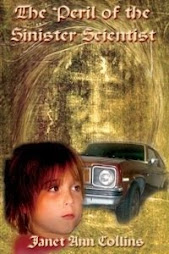Tonight in California we'll be setting our clocks ahead one hour. Some, like the ones on cell phones and computers, will change themselves automatically, but most of us will need to manually change the clocks on stoves, microwaves, alarm clocks, watches, etc.
This whole daylight savings time thing seems strange to me.
It's supposed to save energy by making people go to bed an hour earlier. That might have made a big difference in the 1940s when most people worked from 9:00 a.m. to 5:00 p.m. and stores and businesses weren't open in the evenings. But today so many people are working, shopping, etc. at all hours I wonder if changing the clocks really makes much difference in energy usage at all.
Many countries don't have Daylight Savings Time. In the US different states and, in some cases parts of states, have different dates for the time changes. That means it can be difficult to know if it's too late to phone a friend or relative who lives far away.
And a few years ago where I live they changed the dates of Daylight Savings Time to start earlier and end later in the year. Maybe if it really does save energy one of these days we'll be required to be on Daylight Savings Time all year long.
If you live where the time change happens tonight, don't forget to change your clocks before you go to bed.
Showing posts with label Daylight Savings Time. Show all posts
Showing posts with label Daylight Savings Time. Show all posts
Saturday, March 9, 2013
Saturday, November 3, 2012
Daylight Saving?
It seems strange to me that our governments command everyone to get up an hour earlier or stay in bed an hour longer, but that's what happens in most, but not all, of the United States. In the Spring we are required to set our clocks an hour later (Spring ahead) and in the Fall we must set them an hour earlier (Fall back.)
Daylight Saving Time was put into effect during World War I and World War II and didn't exist in between those wars, but was continued after the second one. And back then it probably helped save energy.
But does it really do that today?
Back in the first half of the twentieth century most electricity was used for lighting. By the late 1940s most people had some appliances like vacuum cleaners, radios, toasters and electric mixers in their homes, but even televisions weren't available yet. In some rural areas people still used ice boxes instead of refrigerators.
I wonder if today we actually use a lot less energy during daylight hours. Now millions of people depend on computers or power tools to do their jobs, big box stores and other buildings are lit all day, many homes have whole-house air conditioning and heating systems, people use cell phones instead of land-lines, read on electronic devices and use other things that need charging.
People recovering from Sandy who have been without electric power for days realize how much we have come to depend on it for things we use all day, not just after dark.
Daylight Saving Time was put into effect during World War I and World War II and didn't exist in between those wars, but was continued after the second one. And back then it probably helped save energy.
But does it really do that today?
Back in the first half of the twentieth century most electricity was used for lighting. By the late 1940s most people had some appliances like vacuum cleaners, radios, toasters and electric mixers in their homes, but even televisions weren't available yet. In some rural areas people still used ice boxes instead of refrigerators.
I wonder if today we actually use a lot less energy during daylight hours. Now millions of people depend on computers or power tools to do their jobs, big box stores and other buildings are lit all day, many homes have whole-house air conditioning and heating systems, people use cell phones instead of land-lines, read on electronic devices and use other things that need charging.
People recovering from Sandy who have been without electric power for days realize how much we have come to depend on it for things we use all day, not just after dark.
Subscribe to:
Posts (Atom)












